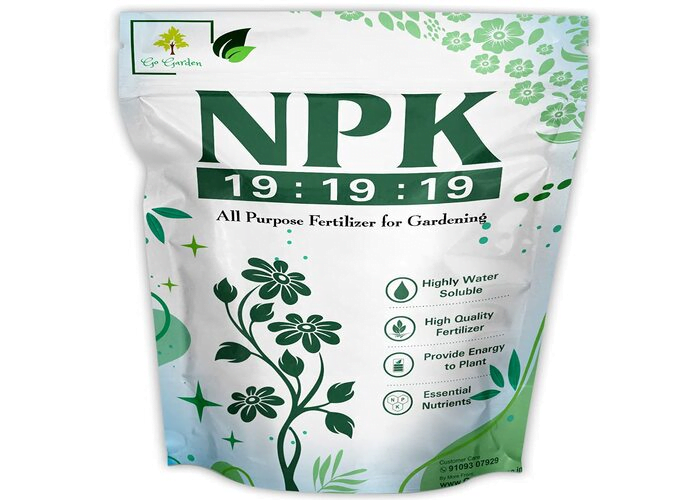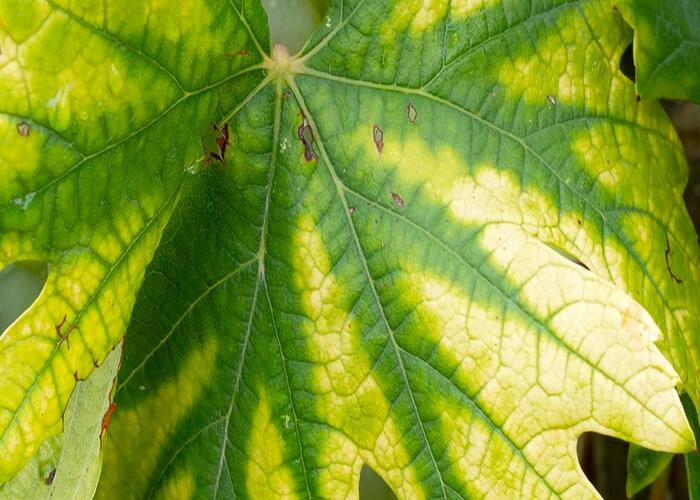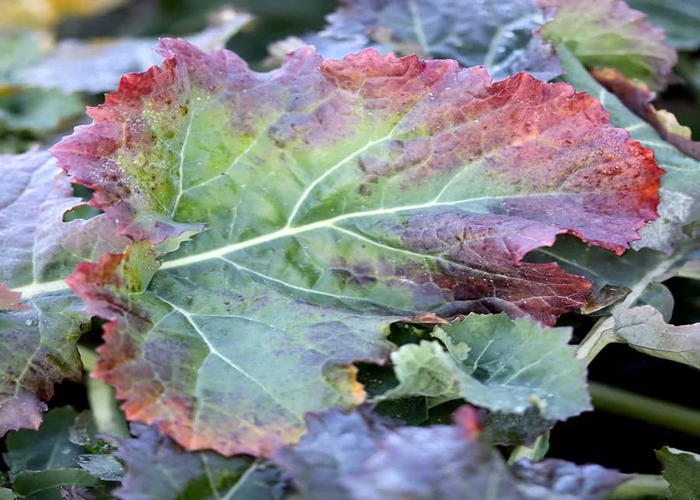How often are you confused while choosing fertilizer? New plant parents get confused easily. But not anymore.
NPK fertilizer is the best fertilizer choice. An NPK fertilizer is a manmade fertilizer containing Nitrogen (N), Phosphorus (P), and Potassium (K).
Why these 3 elements?
Well, NPK fertilizer is important for providing enough nutrients. Without these major nutrients, your plants won’t grow well.
Additionally, each element contributes to a plant’s health and appearance. For example, if you want to boost your plant’s production, potassium is the key. However, if you see a leggy growth, your plants need nitrogen-rich fertilizer.
Since you know that NPK fertilizer is highly beneficial to your plant, how do you choose the best NPK fertilizer? Moreover, how often should you use NPK fertilizer? Using the wrong amount of fertilizer can damage your plant.
However, don’t worry, this article is here to help. Here in this article, you will find answers to all your questions about What is NPK fertilizer, from what it is to how much you should apply.
What is NPK fertilizer?

NPK fertilizers are man-made fertilizers containing nitrogen (N), phosphorus (K), and potassium (P). It is important for plants to have each element in order to grow properly and appear healthy.
We will look into each element and see what effect they have on your plant.
Nitrogen
- Nitrogen plays a crucial role in the production of new tissues in plants, especially leafy tissues.
- If lawns and plants do not receive sufficient nitrogen, they will grow slowly and become pale.
- Too much nitrogen causes plants to put their efforts into green growth and lose their blooms and fruit.
Phosphorus
- In plants, phosphorus helps them grow roots, set buds, and set seeds.
- Phosphorus helps plants use other nutrients more efficiently, and it helps turn solar energy into useful energy.
Potassium
- Potassium boosts plant growth.
- It helps plants make carbohydrates and makes them disease-resistant.
- It also regulates metabolism.
- Plants low in potassium may be stunted and produce less.
Every fertilizer packet will have these elements and its own NPK ratio or formula. Let’s figure out what is NPK fertilizer formula.
NPK Fertilizer Formula
NPK fertilizer formulas are included in every fertilizer you buy. On fertilizer packets, the NPK formula is a significant feature. It measures the percentage of nitrogen (N), phosphorus (P), and potassium (K) by volume.

For example, A fertilizer containing NPK 19-19-19 means that the fertilizer contains 19% nitrogen, 19% phosphorus, and 19% potassium.
Another example can be the 25-4-2 NPK formula, here it contains 25% nitrogen, 4% phosphorus, and 2% potassium.
In fertilizers, all of these components must be present; if any are missing, then the ratio will be zero. For example, 12-0-0 fertilizer contains nitrogen but no phosphorus or potassium.
Why is Fertilizing Houseplants with NPK important?
For plants to reach their full genetic potential, they need 17 essential elements. Among these 17, 14 are absorbed by plants through the soil, and the remaining three originate from air and water.
Moreover, plants take up nutrients from the soil in different ways, and crops need supplementation after harvest. Therefore, NPK houseplant fertilizer is important for providing the plant with the necessary supplements.
Fertilizers contain nitrogen, phosphorus, and potassium, which are considered the “Big 3” nutrients. A plant’s nutrition depends on each of these fundamental nutrients.
The most important nutrient in plants is nitrogen, which is absorbed more than any other element.
Nitrogen is important for making plants healthy as they grow and are nutritious after they are harvested. In Plants, protein makes up the bulk of their tissues, and nitrogen is essential to its formation.
Second, phosphorus plays a key role in a plant’s ability to use and store energy, including photosynthesis. A normal plant’s growth and development depend on it as well. Typically, phosphate rock is used in commercial fertilizers as a source of phosphorus.
A third key component of commercial fertilizers is potassium. This compound assists plants in resisting disease as well as increasing crop yields and quality. Potassium also strengthens a plant’s root system and prevents wilting when the weather is cold or dry.
How to choose the right NPK fertilizer?
Not all plants have the same fertilizer requirements and it can cause serious issues if you apply the same method for all plants. To provide the right fertilizer first you need to evaluate the amount of nutrients its current soil contains or if you are planting the tree for the first time note down the nutrient requirements your soil will have.
If you don’t choose the right nutrients or if the pH level is too low or high for your plant, it will fail to consume nutrients even if you fertilize it timely in the right amount. Understanding what’s already in your soil is important because you can do more damage than good when using a fertilizer high in potassium to an already potassium-rich soil.
Here, follow these steps to choose the right fertilizer,
1) Test your soil:
Testing your soil before you start adding amendments will give you an idea. You can test your soil by yourself at home by using 3 in 1 moisture meter, or for best and more detailed results you can contact your local cooperative extension office.
2) Understand what you are planting:
Different plants may demand varying portions of precise nutrients. For example, leafy greens succeed with more nitrogen, while fruits and flowering plants profit from more phosphorus. Before tackling any gardening or planting method, ensure you learn the requirements of the plant you’re growing and its fertilizer necessities.
3) Use plant-specific fertilizer:
An easy way to select a fertilizer is by using a fertilizer that is specified for your plant. In the market, you will find fertilizer formulated for bulbs, cacti, house plants, flowering trees, lawns, and acid-loving plants, they will match your fertilizer need or come close to your requirements.
4) Determine the form of your fertilizer:
When setting up a new lawn, think about using a fast-acting liquid fertilizer. Just like that, you could opt for granulated fertilizer for a gradual and sustained nourishment for the plant and its roots. Many plant care guides outline nutrient ratios, as well as recommendations for liquid versus dry forms and quick versus slow-release options.
5) What to do when you are clueless:
It’s okay if you are confused and don’t understand how soil testing works. In that case, just go for compost instead of any commercial fertilizer. You can opt for slow-release fertilizer as well, cause slow-release fertilizers are most likely less harmful.
Which NPK fertilizer is good for plants?
Normally, plants require more nitrogen and potassium than phosphorus. For most indoor plants, an N-P-K ratio of 4-1-3, 6-1-4, or 5-5-5 would be ideal. For flowering indoor plants 3-1-2 is highly suitable.
However, the NPK ratio will also depend on the needs of your plants. For example, if your plant is lacking phosphorus then it is best to feed it NPK fertilizer rich in phosphorus.
See the table below to determine your plant’s deficiency and what element it needs.
| Element | Deficiency symptoms |
| Nitrogen (N) | Chlorosis occurs in general, especially in older leaves; in severe cases, the leaves turn yellow, then tan as they die; some plants exhibit purple colouring due to purple pigment accumulation |
| Phosphorus (P) | A dark green plant that becomes red or purple as it accumulates anthocyanins; later stages of growth, the stems become stunted and older leaves turn brown and die |
| Potassium (K) | There are spots of dead tissue on the tips and margins of leaf tips or stems; mostly older leaves are affected. |



So, as you can see NPK ratios don’t work the same way for every plant. There is no doubt that plants need macronutrients, secondary nutrients, and micronutrients. It is necessary to adjust these nutrients according to the life cycle, growth, and reproduction of the plant.
Example 1: Those plants that grow in dense soils are heavier nitrogen and phosphorus feeders. For vigorous root growth, these plants need nitrogen and phosphorus, which are essential for reaching moisture and nutrients in the soil.
Example 2: Some plants feed heavily on potassium, which is needed for photosynthesis and growth. In contrast, other plants love the balance of NPK and trace elements – such as zinc, boron, and molybdenum – needed to produce adequate flowering and fruit production.
Hence, the nutrition needs of different plants vary.
Is NPK good for all plants?
Yes, NPK is good for all plants. As all plants require nitrogen, phosphorus, and potassium to grow optimally. The plant will die if it does not receive enough of any one of these nutrients.
When to use NPK fertilizer?
It is important to understand when it is time to use NPK fertilizer. There may be times when you do not need to use NPK fertilizer on your plants.
In the case of recently potted or repotted plants, fertilizer will be of no benefit. Because there are plenty of nutrients in their fresh potting mix that they have yet to utilize!
Also, wait 2–3 months after freshly repotting before fertilizing active growing plants. If you repotted during the fall and winter, you can skip fertilizer until next spring.
Early spring to late summer is the best time to use NPK to fertilize houseplants sparingly. This is the time of year when plants are actively growing, so they will benefit from fresh nutrients the most. It is best not to fertilize plants at the end of their growing season.
When it’s hot outside, fertilize plants at the start of the day or at the end of the day. Ensure soil nutrients are distributed evenly by watering fertilizers thoroughly.
In general, fertilizer is applied near or slightly below seed rows and between rows, where roots can easily reach it. Fertilizer is commonly buried 2 inches deep and 2 inches to the side of seeds or plants.
Moreover, the fertilizer you are using will determine how often you need to fertilize your plants. However, you can fertilize every other week or every month.
How to use NPK Fertilizer?

In most cases, NPK fertilizer is chemical fertilizer (15:15:15) or (19:19:19). You can buy these in granular form, powdered form, or liquid form.
Due to their strength and concentration, chemical NPK fertilizers are administered in smaller quantities to plants. A small spoon is provided per plant using the ring method. (Ring method is placing the fertilizer in a circle around the base of a plant)
The fertilizer should be mixed with water according to the following steps:
- Use one-half teaspoon of NPK fertilizer.
- Add it to 2 litres of water and mix well.
- Mix well and add 1/half teacup per plant per week (or 3 weeks for small plants).
- You can spray it on the leaves or you can add diluted solution to the plant (not close to the roots)
Always, make sure you follow the instructions on the fertilizer label when applying it. After applying the fertilizer, water the plant immediately. Otherwise, the plant will be burned.
There is also the easiest method of throwing them on the soil. They are soluble in water. Your plant slowly absorbs NPK elements as you water it, as the NPK gradually dissolves in water.
It is also possible to purchase NPK in organic form. In soil, organic NPK can be added without worrying about quantity. NPK is present in most organic fertilizers, such as compost, vermicompost, and cow-dung manure.
What is the best fertilizer NPK?
A plant’s needs and the type of fertilizer determine the best NPK fertilizer. For some plants, the best fertilizer NPK is listed below.
1. Balanced NPK fertilizer ratio for all plants
For each type of indoor plant, use a fertilizer that has a balanced NPK ratio, secondary nutrients, and micronutrients.
- 1-1-1 fertilizer,
- 2-2-2 fertilizer,
- 10-10-10 fertilizer, or
- 19-19-19 fertilizer
For indoor plants that have specific fertilizer requirements, you can purchase specialized fertilizers that are tailored to their needs.
2. For all fruiting and flowering plants
Early spring is the best time to feed flowers. And in the summer they should be fed every 2-4 weeks. Fertilize fruit trees spring and fall at least twice a year.
- 5-10-10 fertilizer, (for flower), or
- 10-10-10 fertilizer (for fruit)
3. Succulent
A succulent can grow in a variety of soil conditions and compositions. Additionally, they need only light fertilizer. For most varieties with a tolerant root system, one application in late summer should be fine
- 1-1-1 fertilizer
- 5-10-10 fertilizer,
- 13-11-11 fertilizer,
- 15-15-15 fertilizer, or
- 14-14-14 fertilizer
4. Fiddle leaf fig
For Fiddle Leaf Figs to thrive, they need an optimal balance of nutrients. The dark green colour of the leaves will disappear if the plant doesn’t receive enough fertilizer.
- 3-1-2 fertilizer,
- 6-2-4 fertilizer, or
- balanced 10-10-10 fertilizer
5. Snake plants
Only fertilize snake plants twice a year since they grow slowly. Fertilize them in the spring to strengthen them, and then in the fall to sustain them.
- 2-2-2 fertilizer,
- 10-10-10 fertilizer, or
- 20-20-20 fertilizer
6. Cactus
For optimal growth and health, cacti should only be fertilized once or twice a year. It’s a good time to fertilize in the spring. The reason is that cacti are more susceptible to nutrient deficiencies during these periods.
- 1-2-2 fertilizer,
- 2-7-7 fertilizer,
- 5-10-10 fertilizer,
- 5-15-10 fertilizer, or
- 10-10-10 fertilizer
7. Peace lily
During the growing season, Peace Lilies only require feeding 2-3 times. Their growth and beauty will be enhanced by abundant primary and secondary nutrients.
- 2-1-2 fertilizer,
- 2-2-2 fertilizer, or
- 10-10-10 fertilizer
8. Money tree
As often as once a month, fertilizing Money Trees is essential for their health. It ensures a steady supply of nutrients, which aids in strong leaf growth.
- 10-10-10 fertilizer,
- 18-6-11 fertilizer, or
- 20-20-20 fertilizer
9. Golden Pothos
If you are not getting specific fertilizer for golden pothos, then get the following NPK ratio fertilizer. You can fertilize golden pothos every 10 days in spring, twice in summer, and once in autumn.
- 7-3-6 fertilizer,
- 8-4-6 fertilizer, or
- 7-4-7 fertilizer
10. Lotus
Once a month or every three weeks, feed the lotus,
- 10-10-10 fertilizer, or
- 5-10-10 fertilizer
FAQs
Q1. Why is NPK used in fertilizer?
Ans. Nitrogen, potassium, and phosphorus are necessary for plants to grow and thrive. A well-fed plant is more productive and healthier. If you don’t add fertilizer to your soil, it may not provide enough nutrients for optimal growth.
Q2. Which NPK is best for flowering?
Ans. Look for a fertilizer with a high potassium and low nitrogen content for fruiting and flowering plants. By doing this, you will encourage the growth of fruit and flowers without promoting excessive leaf growth. The production of flowers and the quality of fruits and vegetables will be poor if potassium levels are low.
Q3. Which NPK is best for root growth?
Ans. A 3-20-20 fertilizer containing 3% nitrogen, 20% phosphorus, and 20% potassium will encourage strong, healthy roots. Low nitrogen content promotes leggy green growth over rooting and flowering.
Q4. How long does it take for NPK fertilizer to work?
Ans. It takes 1-5 days after fertilizer application for results to appear.
Conclusion
It is important to include NPK in your plant’s diet for it to grow healthy and produce a good crop and flowers. If you want to apply NPK, you can dilute it in water or add it to the soil. Nevertheless, don’t forget to water your plants after fertilizing, otherwise, they will be burned.
The early spring to late summer, when your plant is actively growing, is the best time to apply NPK. Moreover, to avoid burning the plants, apply NPK fertilizer early in the morning or late at night.
There are different NPK ratios for different plants depending on the type and need of the plant. However, balanced NPK is beneficial to all indoor plants.
In addition, some of the plants may need fertilizer rich in nitrogen if they are growing leggy. Furthermore, it is best to use a fertilizer with high potassium and low nitrogen for flowering plants.
Please feel free to ask any questions related to What is NPK fertilizer in the comment section below. I’m happy to assist you with any questions you may have.
Related Articles
- 10+ Money plant Benefits That Will Make you Keep It In Your House
- Arrowhead Plant Care- An Ultimate Guide to To Take Care of Your Arrowhead Plant.
- Birds Of Paradise Leaves Curling- 7 Alarming Reasons And How To Fix Them?
- Are Spider Plants Toxic to Cats?- 4 Ways To Prevent Your Cats From Eating Spider Plants.
- How to Treat Fungal Infection in Bonsai Trees at Home
- How to Grow & Care for Variegated Snake Plant




फलदार पौधों में एन पी के कब देना चाहिए और कैल्शियम मैग्नीशियम सल्फर और माइक्रोन्यूट्रिएंट कौन-कौन सी अवस्था में देना चाहिए पौधे में